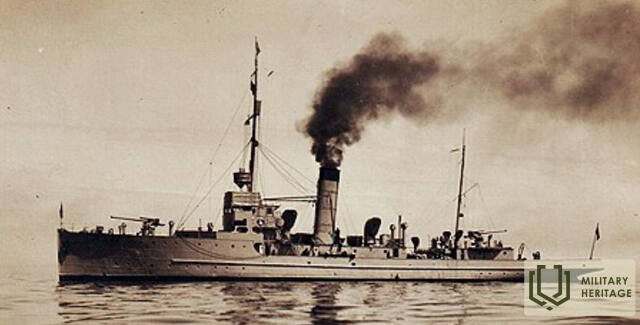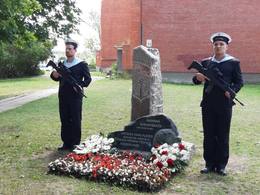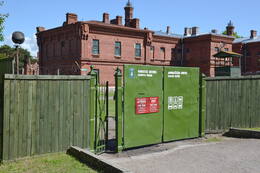Latvian Naval Forces
I WW1, I Wars of Independence, Independence of the Baltic States, II WW2, IV Soviet Occupation, Restored Independence
August 10, 1919, was officially accepted as the founding day of the Latvian Navy, when the Maritime Division was established at the headquarters of the Commander-in-Chief of the Latvian Armed Forces, D. Simanson, which included the previously established Seafarers' Jewelry and Minesweeping Party. During the War of Independence (1918-1920), the need for the new Latvian state to establish its own Navy became particularly clear. Private merchant ships, cutters, steamers and tugs were involved in the war. The maritime part made a significant contribution to Bermontiad. On the left bank of the Daugava, near the Daugavgrīva fortress, it landed the 9th Rezekne Infantry Regiment, took part in battles near Voleri manor, Vārnukrogs, Šmita cement factory, took part in the occupation of Jelgava, landed a saboteur unit at Ragaciems. On June 12, 1921, the first ship of the Latvian Navy, VIRSAITIS, was launched, which later served as the flagship. Under the terms of the League of Nations of October 1920, Latvia was allowed to establish and maintain a Navy. In 1924, by order of the President, the individual units of the fleet were renamed the Coast Guard Squadron, with Captain A. Keizerling appointed commander. On December 1, 1922, the Maritime Aviation Division was established at the Aviation Division, but in 1923 it was separated and placed under a special assignment as a naval officer at the General Staff and later as the commander of the Coast Guard Squadron. On May 1, 1926, a separate Maritime Aviation Division was established.
The navy was the most expensive unit of the Latvian Armed Forces, but it was important not only for national defense but also for international prestige. In 1938, the Defense Squadron was renamed the Latvian Navy, and on July 15, the Minister of War, General J. Balodis, solemnly presented it with the motto of the navy: "We are united by the Holy Name of Latvia". The Latvian navy began to form during the War of Liberation, when it became clear that a country with a 496-kilometer coastline needed forces to protect it. The main tasks of the navy were to protect the coast with mines, mobile coastal artillery, submarines, airplanes, torpedoes and small high-speed warships armed with lightweight cannon cannons. The death of the Latvian navy began in the summer of 1940 after the forcible incorporation of Latvia into the USSR. Most of the ships and submarines of the Latvian navy were destroyed or destroyed during the Second World War. The formation of the Latvian Navy resumed in 1992 after the restoration of Latvia's independence. On April 11, 1992, a flag was raised on the first warship of the rebuilt fleet, Sams. This date is considered to be the rebirth of the Latvian Navy.
More information sources
https://www.mil.lv/lv/vienibas/juras-speki/kara-flotes-vesture (accessed on 27/10/2021)
https://en.wikipedia.org/wiki/Kara_flote (accessed 27/10/2021)
Related objects
Memorial to Kaizerlings, founder and commander of the Latvian Navy
Archibald Peter Theophilus von Keyserling, also known as Archibald Keyserling, was a naval officer, the first commander of the Republic of Latvia's Coastal Defence Squadron, Admiral. He played an important role in the establishment of the Latvian Navy.
A. Keizerling came from an old German noble family, born on 18 November 1882 in Auguste manor, Grobiņa parish.
In 1895 he joined the St Petersburg Sea Cadet Corps of the Russian Tsarist Navy, graduating in 1901 with the rank of midshipman. Keizerling served with the 13th Fleet in the Russian Far East and took part in the Russo-Japanese War. In May 1905 he was taken prisoner by the Japanese, but was promoted to Lieutenant after his release.
In 1906 Keizerling was a senior officer on a mine cruiser. From 1907 to 1908 he attended the Liepaja Submarine Course in Liepaja. After completing the course, he again went to Vladivostok, where he served in the Russian Pacific Fleet and from 1908 to 1912 was captain of the submarine Field Marshal Count Sheremetyev. In 1911 he was promoted to the rank of First Lieutenant.
After his transfer to the Baltic Fleet he was captain of a squadron minesweeper, took part in the First World War, at the end of which he was already a captain of the 1st rank.
In July 1918 he retired from the service. In early 1919, A. Keizerling joined the Baltic Landeswehr, where he served as a cavalry squadron commander with the rank of staff sergeant.
On 1 April 1920, he was appointed Naval Officer of Special Tasks of the Chief of the Army Staff, when the formation of the Latvian Navy actually began. In 1921, Keizerling was promoted to the rank of sea captain. On 27 June 1924, the Latvian Coastal Defence Squadron was established, of which A. Keizerling was appointed commander and in 1927 was promoted to the rank of Admiral.












